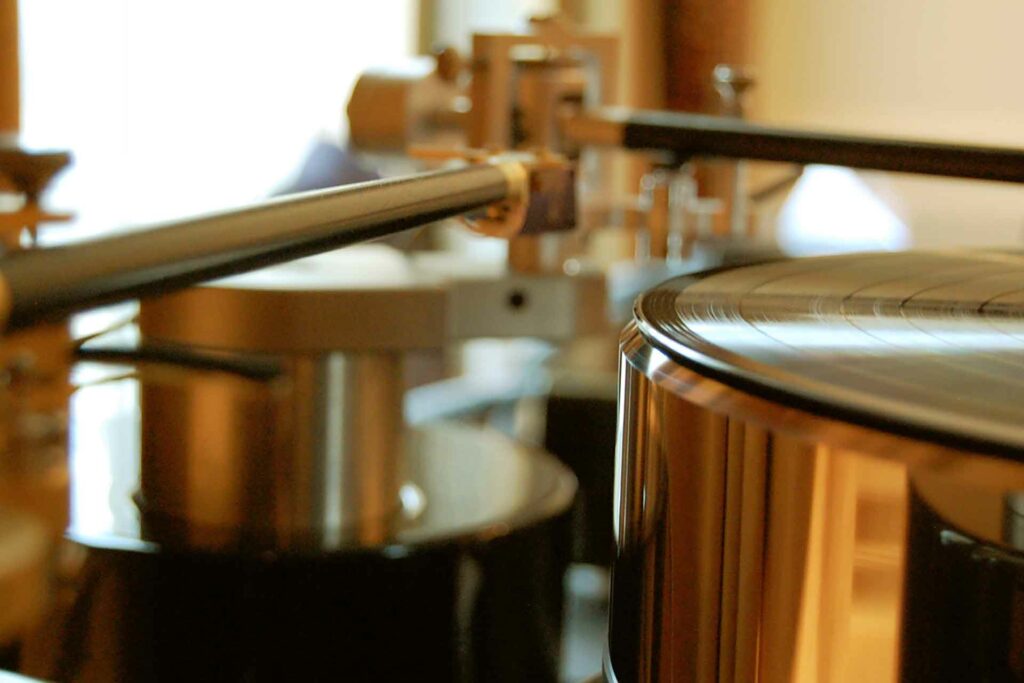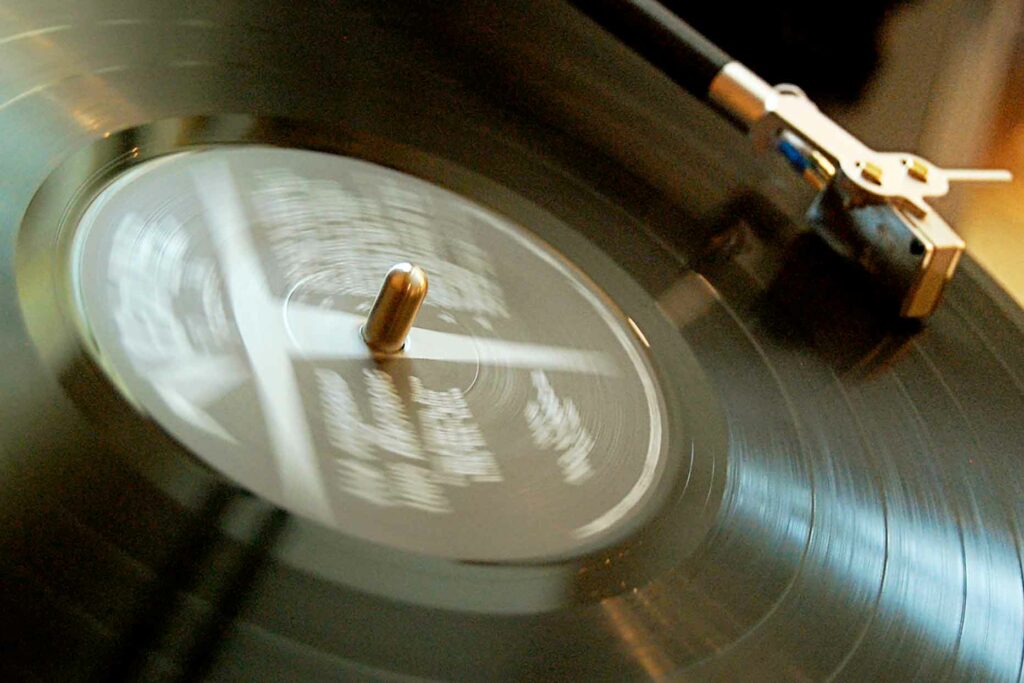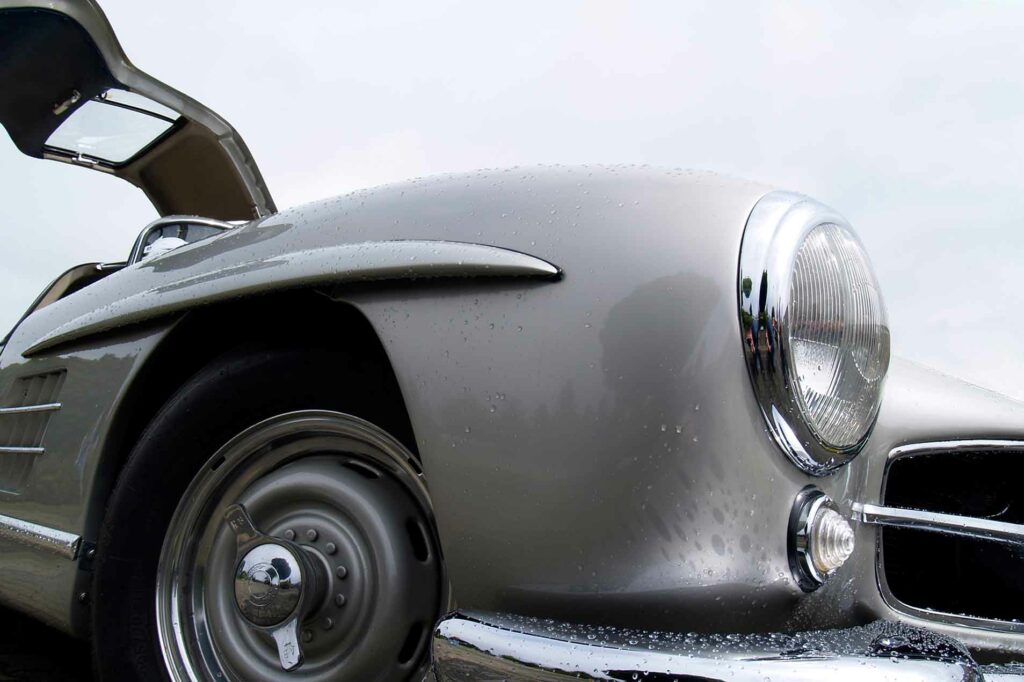Some audiophiles read my articles and think I absolutely hate vinyl. I don’t at all. In fact, I have been thinking of adding a turntable to my ever-evolving living room music playback system.
The issue with vinyl is that we need to look at the nearly century-old format here from our vantage point in the 21st century. In sales, there’s a technique called “The Ben Franklin Close” where you write down the pluses and minutes on each side of a sheet of paper and evaluate the value proposition, so you can make a well-informed decision. Hell, I grew up in Philly and I never flew a kite in a thunderstorm, so perhaps I’ve made one or two good decisions? Hard to tell. Let’s try Ben’s model and see if it tells us something about the value proposition of this old analog audio format in the age of digital.

The Arguments in Favor of Vinyl in a Digital Audio Future
- We live in an overly-digital world and stress is a killer. Taking time to enjoy things that are analog, like reading an actual book or spinning an LP, has value. Turning off the blue light from your computer or the ever-present lure of social media connectivity can be a very good thing. In fact, disconnecting from our devices and listening to some fantastic music can lower your blood pressure and anxiety levels.
- Listening to a classic album on the format that it was released on and originally mastered for also has its benefits. Enjoying a record with the song order that the engineer, producer, and artist originally intended can also be appealing. Have you ever tried listening to Pink Floyd’s The Wall on shuffle? Take it from me and skip that experience. It makes no musical sense.
- Audiophile turntables are a beautiful design element. They are architectural. They spin in a way that can be mesmerizing. Even a brand-new turntable packs retro appeal. A well-placed turntable can make a meaningful statement even when it isn’t spinning.
- Vinyl LPs used to be an affordable way to collect old music, especially when you buy it used. Fresh pressings of 180-gram limited editions (don’t get me started on Mo-Fi) can get a little pricey, but you don’t have to go that route. My buddy Andrew and his wife love going shopping for used vinyl and classic audio gear in pawn shops in Austin, and you’ll often find racks and racks of old records at your local Goodwill.
- There is a lovely ritual when listening to vinyl that includes cleaning, spinning, and finally listening to an album. You might sit down and read the album liner notes, which promotes the calming advantages of listening to music. Does a good streaming service have more cross-referenced metadata on a record? Yes, but does that really matter when your listening experience is interrupted by a tweet from your racist aunt?
- Turntables don’t have to be crazy expensive, either. $200 buys you a pretty nice deck these days. You could spend less too and not be unhappy if you are just getting into the hobby and looking for a jumping off point. Or you could spend $500 and get a record player that would have blown the minds of your parents back in the 1980s.

The Arguments Against Vinyl in a Modern Audiophile System
- The LP as we know it has been around for a century (give or take a decade on how you want to define the format) and has terrible performance in terms of dynamic range compared to newer, digital formats. In a perfect world, vinyl could conceivably reach dynamic range levels of around 70dB. CD and high-res digital downloads or streams can reach much higher. Mind you, almost no albums are released with that much dynamic range, instead maxing out at somewhere around 30 to 40 dB for classical and avant-garde music and more like 10 to 12 dB for most rock and pop and 15 to 20 dB for better hip-hop. But with increased dynamic range comes decreased noise. You don’t want a recorded snare drum to actually hit 110 dB or you’d find your music unlistenable for the most part—that, or you’d have to ride the volume knob like an old-school studio engineer. But having more dynamic range means you push the noise floor lower and lower, and while the noise floor of today’s digital formats is inaudible, you can hear the noise in most records.
- That “warmth” that old-school audiophiles love is actually even-order harmonic distortion. When you spend your money on a world-class stereo preamp, a lot of what you are paying for is the nth degree of performance and that includes lower levels of THD (total harmonic distortion). Why feed your high-performance music system a distorted signal when you invested so much money to get electronics that are, in effect, distortion free.
- The value of today’s vinyl is poor in comparison to what it costs to have access to entire libraries of music in CD resolution of higher via streaming. The likelihood is that you already have some access to streaming music in CD/HD resolutions. Amazon Music, Qobuz, Tidal, Spotify, Pandora, Apple—so many others are either bundled in with your other technology or available for $10 to $15 per month. Oh, and you likely don’t need fancy source components to stream them into a modern audiophile system. Any number of today’s disc players are worthy streamers. Then there are dedicated streaming devices like Roku, Apple TV, Sonos, and others that offer even more compelling content while outputting killer sound. Compare those low hardware costs to new vinyl and a respectable turntable and you can see digital music has it all over analog these days.
- Large vinyl collections are heavy and unwieldy. I know of a number of music collectors who simply ran out of room to store any more LPs so they had to start selling off music that they aren’t likely to listen to much in the future. Digital music storage takes up little to no space. Legally ripping your Compact Discs is easy and you can store in the neighborhood of 25,000 albums on a 1 TB thumb drive that literally fits in your pocket and might weigh one ounce.

So How Do I Make Sense of All This Vinyl vs. Digital Hype?
Despite all the cons, there is a place for both analog and digital in most modern audiophile rigs.
Imagine you got the chance to drive around in an original-condition Mercedes 300 SL Gullwing from 1957. That would, to say the least, be a pretty cool experience, right? The patina of the paint of the Benz is awesome and could win you a Concours d’Elegance for originality—just ask Wayne Carini from Chasing Classic Cars. The tone of the exhaust on the vintage SL is intoxicating. Just looking at the curves in the metal work on such an iconic automobile is over-the-top amazing. The 60-plus years of wear on the custom-made leather luggage just adds to the fun factor of traveling in this fantastic ride. The 300 SL Gullwing is like vinyl in that it is vintage, iconic, architectural and a whole lot of bad-ass.
Now imagine getting to drive a 2023 AMG SL 63 Roadster for a while. That car today is about $178,000 at retail, which is likely one fifth of what a vintage SL will cost you at auction or private sale. The new SL does 0-to-60 in 3.5 seconds thanks to a 577 HP twin-turbo-charged V8 with 590 foot-pounds of torque. The new SL has an automated convertible hard top. It has “launch mode” in case you need to go really fast. It has steel frame crumple zones, lane change software, ABS brakes, air-conditioned seats, automatic breaking, GPS with traffic, satellite radio… and the list goes on.
In a perfect world, you might want to own both cars. I sure want to.
My issue with vinyl is how the print magazine “Elders” sell people on the concept that in a drag race, the 1957 Benz is somehow going to beat the 2023 AMG SL 63. It isn’t. It never will. But there are those in the hobby who will sell you on their kooky beliefs that a turntable will outperform hi-resolution digital. Please ignore them and follow the science. But at the same time, embrace the fact that the audiophile hobby isn’t always about objective measures of performance.
Don’t let anybody poo-poo your turntable or your vinyl collection. At the same time, don’t let anybody tell you that you are getting the closer-to-the-master performance from vinyl versus today’s digital files.
Understanding the benefits of digital audio and retro-analog is key to building a system that is right for you and the way you want your AV system to work. Traditional audiophiles won’t put a TV between their speakers because it might reflect a little sound, but they are missing out on a more complete viewing and listening experience. The old way of doing things isn’t better just because that’s the way the elders did it. Find what works for you and run with it. Screw anybody that doesn’t get it. If you want to chill while spinning Electric Ladyland from the UK import (I have one of these NSFW editions) while reading the liner notes and sipping on some small batch bourbon, who is to say you aren’t living your best life? If, the next night, you are streaming The Jimi Hendrix Experience Live From Maui from 1968 via Amazon Music HD and reading the metadata on your audio system’s dedicated iPad, you’re also enjoying an experience worth having.
Don’t let others dictate how you want your audio system to look, sound, or feel. Find what’s right for you. The audiophile journey is what the hobby is all about and you get to dictate what path you take. My hope is that you understand the advantages and disadvantages of both formats so that you make the best decisions for you. Get experienced.




So what you’re saying is that you can talk like an expert, but don’t even own a turntable or a record. By the second paragraph you complain – “the issue with vinyl” – and then proceed to compare it to electrocuting yourself. But you don’t hate vinyl?
Your analogy about the car really isn’t related. Sure, a 50 year old car won’t beat the new one in a race or whatever you “logically” use to compare them. But, there is a visceral experience that is different. Some appreciate those differences, and others don’t. But there is nothing wrong with people in either of those camps.
Vinyl is a different experience from digital, and if you enjoy the music, you can appreciate the value of both camps. Sure, vinyl has harmonic distortion, but digital has its own distortion. In fact, all of life is distorted by our own perceptions of the life around us.
Buy a turntable that is on an equal par level with your digital setup. Try it out for a while. Then go back to throwing stones. Until you actually own one and use it for a while, I don’t see how you can criticize. As a parallel, how could you talk about the virtues of digital if you haven’t owned and listened to a digital setup?
I think we want to encourage everyone who is interested in this hobby to trust their own ears and to listen and do comparisons. That’s one of the best reasons to seek out and work with a high end specialist dealer – even if much of what they sell may not be attainable right away. Though, they often have more good, affordable gear then expected.
When doing a comparison (listening to a system, and only changing one thing (A, then B, then back to A) it’s not important to be able to precisely describe the differences you hear. What’s important is realizing there ARE differences, and that YOU can hear and appreciate them.
The most important thing to always keep in mind, for someone new to the hobby, and for those of us who have been in it for a long time – is the reason for better audio gear is it can make listening to music more FUN.
Combining those two points, good advice to anyone curious about playing vinyl records – is listen to the same song, played from a CD or digital file, then a vinyl record. Are they different and both sound great, just in different ways? Is one more FUN to listen to? Listening to one vs the other, are you smiling? Tapping your toes? Feel like dancing? and singing along?
If one is more FUN, then you may want to build your system with that in mind. Or give priority to that format when buying music. There is nothing wrong with having only one format, you can always add another. And, for those of us who enjoy vinyl records and digital sources – we don’t play both every time we listen.
A great reminder that it’s all about having fun and enjoying the music is when a friend is over, especially when they are not an enthusiast, and we play them something they know and like – and they just respond with pure joy – because the music is just so much fun to listen to.
Tonight, play a great song – kind of LOUD!
Keith,
Good advice my friend!
I would add to any A-B that it is very important to match levels between A and B on the inputs of say your preamp. A few dB louder will make something that isn’t always better sound clearly better. A simple SPL meter can do that.
I second the FUN comment. This hobby is about fun. Nobody cares what audio gear you have or what your drive or bla-bla-bla. Buy the stuff that you like and that sounds good to your ears and have a blast owning it.
Right before I approved this comment, I put an order in for an audiophile music server. It is sweet but I got the low end one because they are EXPENSIVE. If I need a better LED screen and a more fancy DAC and AES-EBU outputs (I wanted that one) I know that I need to come up with $6,000 more. Right now, I am going to sit on my money, work on the review and enjoy the journey. I might need the better one later and I will buck up then. Never forget to enjoy the journey.
Yes, absolutely – match the volume levels or the louder one will seem better.
Enjoy your new piece and how it will make everything you play on it seem new, and that’s always fun!
This is MY opinion. It works for me. Your mileage may vary.
I’m 58 and grew up on vinyl. Purchased my first record player from Radio Shack (came with two terrible bookshelf speakers) at about age 11. First real stereo at 16 (Yamaha). I played my albums all the time. Music has been the one and only constant in my life.
And I detest vinyl. The noise. The warps. The space a collection takes up. I know digital isn’t perfect. But I believe it to be much less imperfect than vinyl. I’ll even concede that a turntable is far more interesting to look at than any CD player or digital streamer.
So, no. I will never return to the land of pops, clicks, and bass-robbing warps of vinyl.
But I’ll defend your right to listen to it. To enjoy it. To consume music in this format. Just don’t expect me to get it. In the end we are all striving for the same thing: to listen to and enjoy music. How we get there is personal preference. And I’m good with that.
I love the article. It fully fleshes out the unique qualities to both formats without pandering to the average readers desperate need to categorize something as either “Better.” or “worse.”. Which if you ask me, are the least informative, descriptive or educating adjectives that you can bestow upon something. Particularly with such a broad historical significance socially, culturally and technologically.